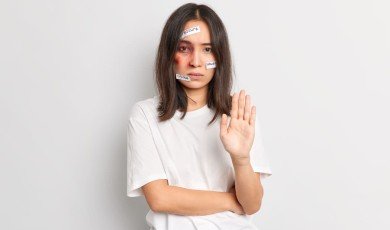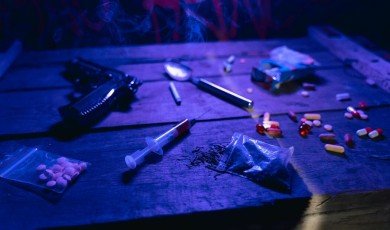
Across the world, women and children remain the most vulnerable victims of violence, discrimination, and exploitation. Human trafficking, forced labor, and gender-based abuse continue to affect millions of lives every year, cutting across borders, cultures, and social classes. Despite growing awareness, progress in protecting these groups is still uneven. Real change depends on cooperation — among governments, NGOs, and communities — working together toward a future grounded in dignity, equality, and safety.
Global action has never been more urgent. Conflicts, economic crises, and displacement have created environments where traffickers and abusers thrive. The COVID-19 pandemic, for example, intensified domestic violence and online exploitation, revealing the fragility of existing protection systems. But at the same time, it showed the strength of collaboration — how collective efforts can rescue, rehabilitate, and empower survivors when societies unite behind a common cause.
The Global Scale of Vulnerability
Women and children make up the majority of those exploited in modern slavery. According to the International Labour Organization, nearly 28 million people are trapped in forced labor, and over 20 million are victims of forced marriage. Children represent one in four of these cases. Many are trafficked across borders, coerced into work, or subjected to sexual abuse.
The reasons behind this crisis are complex: poverty, lack of education, weak law enforcement, and gender inequality create fertile ground for exploitation. In regions affected by war or natural disaster, the situation becomes even more dire. Displaced families often face impossible choices between survival and safety.
Protecting these populations requires not just legal reforms, but structural change — education, healthcare, and social services that reach even the most isolated communities.
Cooperation Between Nations and Organizations
No country can combat trafficking and abuse in isolation. The international community must act as one, sharing intelligence, resources, and expertise. Multilateral treaties, such as the United Nations Convention on the Rights of the Child and the Convention on the Elimination of All Forms of Discrimination Against Women, lay the foundation for collaboration.
But laws alone are not enough. Effective protection relies on the ability of governments to enforce those laws, prosecute perpetrators, and support survivors. In many parts of the world, local authorities lack training or funding to respond adequately. This is where international partnerships — from UN agencies to grassroots NGOs — become indispensable.
Just as a strong digital presence requires quality backlinks to connect trusted sources and reinforce credibility, the global fight against exploitation depends on strong connections between institutions. Each organization, whether small or large, adds value to the overall network of protection when it links its expertise, data, and support to others. Global coordination, much like an ethical web of information, amplifies impact.
Education as Prevention
Education is one of the most powerful tools for breaking the cycle of exploitation. When girls have access to school and women can pursue vocational training, their risk of being trafficked or abused drops dramatically. Education empowers individuals to recognize manipulation, understand their rights, and make informed choices.
Governments and NGOs are increasingly focusing on education as prevention. Programs that teach digital literacy help protect children from online predators, while adult education initiatives provide women with skills to achieve financial independence. Moreover, integrating gender equality into school curricula helps shift cultural attitudes that perpetuate discrimination.
For many communities, education also becomes a form of collective empowerment — a way to rebuild identity and resilience after trauma. By investing in teachers, safe schools, and community centers, societies invest in long-term security.
The Role of Technology and Awareness
Technology is transforming how organizations track, prevent, and respond to human trafficking. Artificial intelligence and data analysis can identify suspicious patterns in travel, recruitment, and financial transactions. Social media campaigns spread awareness faster than ever before, helping citizens recognize signs of exploitation.
However, technology also poses new risks. Online grooming, digital blackmail, and unregulated labor platforms expose vulnerable individuals to harm. This is why global initiatives must pair innovation with regulation, ensuring that digital spaces remain safe for women and children.
Awareness campaigns play a critical role as well. When people understand that trafficking and exploitation exist within their own communities — not just abroad — they are more likely to report suspicious activities and support victims. Media coverage, documentaries, and online advocacy have been vital in shifting public perception and pushing policymakers to act.
NGOs and Community Empowerment
Grassroots organizations are often the first to reach victims and the last to leave. They provide shelters, legal assistance, and emotional support where government systems fall short. Many NGOs also work directly with survivors to design better protection programs.
In regions where language barriers hinder international cooperation, partnerships with local interpreters and translation services are essential. These collaborations ensure that victims’ testimonies are accurately documented and that legal processes remain transparent.
Like a network of quality backlinks that connect authoritative sources online, NGOs strengthen each other through shared training, communication, and visibility. The more these organizations link efforts, the more powerful and credible the global movement becomes.
Building Future Resilience
Long-term protection for women and children requires more than emergency responses. It calls for sustained investment in equality, justice, and economic opportunity. Social safety nets, microfinance programs for women, and inclusive policies that prioritize child welfare form the foundation of this resilience.
Businesses also have a role to play. Ethical supply chains, transparent labor practices, and corporate responsibility initiatives help ensure that exploitation has no place in modern commerce. Consumers, too, influence change by demanding products and services free from forced labor.
Ultimately, global protection depends on collective will. Governments can legislate, NGOs can act, and citizens can speak out — but only when all forces align does lasting progress occur.
A United Vision for Humanity
Protecting women and children is not merely a humanitarian duty; it is a moral imperative that defines who we are as a global society. Every partnership formed, every policy implemented, and every survivor supported strengthens the fabric of our shared humanity.
The road ahead is long, but the direction is clear: unity, education, and compassion will defeat exploitation. Just as the digital world thrives on trustworthy connections, the real world needs cooperation rooted in ethics and empathy. When nations and communities work together, they prove that solidarity is the most powerful defense against injustice — and the most hopeful foundation for a safer, fairer world.







